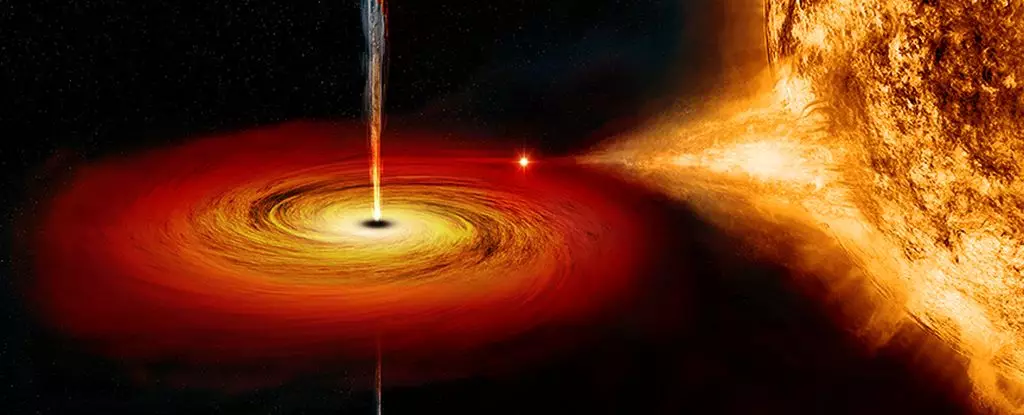The process of matter falling down onto a black hole from outside the event horizon has been a topic of great interest and mystery for scientists. A recent paper has shed light on the detailed mechanics of this phenomenon, providing valuable insights into the behavior of matter as it approaches a black hole. The study confirms some of the key predictions made by Einstein’s theory of gravity and gives us a new perspective on the final moments before matter crosses the point of no return.
One of the most intriguing revelations from the study is the existence of a ‘plunging region’ near the black hole, where material stops circling and falls straight down. This concept, predicted by Einstein’s theory, has now been observed in X-ray data of an active black hole, providing concrete evidence of its existence. The researchers describe this region as analogous to a river turning into a waterfall, marking a significant milestone in our understanding of black hole dynamics.
As matter makes its way towards a black hole, it follows a complex and fascinating path. Rather than moving in a straight line, it swirls and spirals around the black hole, akin to water swirling towards a drain. Scientists have long relied on this swirling motion to study the environment around black holes, using water vortices as a valuable model for understanding the behavior of matter in these extreme gravitational fields.
Albert Einstein’s theoretical work laid the foundation for our understanding of how matter behaves near black holes. His predictions about the instability of circular orbits at close proximity to black holes have been consistently supported by observational evidence. The recent study not only confirms these predictions but also offers a new way to probe the extreme gravitational forces at play near black holes.
The researchers involved in the study employed numerical simulations and models to visualize the plunging region and predict the type of light emissions associated with it. By analyzing X-ray data from a black hole system located about 10,000 light-years away, they were able to identify the telltale signs of the plunging region and match them to theoretical predictions. This discovery opens up new possibilities for studying black holes and investigating their immediate surroundings in greater detail.
The confirmation of the plunging region’s existence represents a significant breakthrough in black hole research. By uncovering this final area around black holes, scientists now have a powerful new tool for studying the strongest gravitational fields in the universe. This discovery paves the way for future investigations into the behavior of matter near black holes and promises to deepen our understanding of the fundamental forces that govern the cosmos.


Leave a Reply